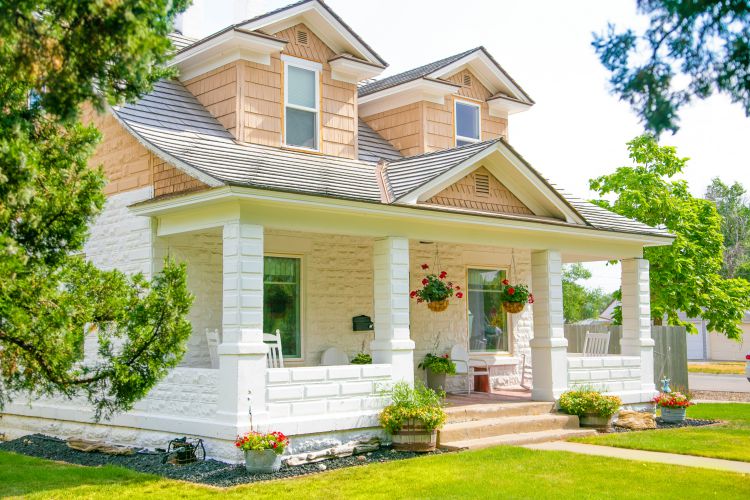Buying a fixer-upper in Atlanta can be exciting and stressful at the same time. The charm of older homes in neighborhoods like Grant Park, East Atlanta, and Kirkwood attracts many buyers looking for space, character, and a chance to make a place their own. While the upfront price may be appealing, the real work begins once you walk through the door as the owner.
The key to staying calm and productive during the first few months is having a plan. With so many potential issues in sight, such as peeling paint, broken fixtures, and outdated wiring, it’s easy to lose track of what really matters. Starting with the right projects can help you avoid future problems and save money. The trick is knowing what should come first and what can wait.
In a city like Atlanta, where humidity and storms are part of the year-round forecast, the exterior of a home often needs attention sooner than you might expect.
Start with the Roof and Structural Integrity
One of the first things you should look at is the roof. Even if it doesn’t seem like an immediate problem, it plays a big role in protecting everything underneath. A few missing shingles or signs of sagging might look minor, but they can let in moisture, lead to mold, or cause insulation problems that affect the entire home. If the home has an attic, it’s worth checking for any water stains or soft spots in the ceiling.
In Atlanta, sudden summer downpours and humid conditions can turn a small roof issue into a much larger repair. Delaying this type of fix can also affect interior upgrades later. For example, it’s risky to install drywall or flooring if the roof above hasn’t been checked.
If you’re unsure where to start, a good first move is to call a local Atlanta roofer. They know the region’s weather patterns, common structural issues, and the roofing styles often found in older Atlanta homes. A professional roofer can inspect the property, spot early signs of damage, and recommend the right repairs before things get worse. Getting expert input early could save you thousands down the road and give you peace of mind as you move forward with other upgrades.
Addressing roof problems before interior renovations also keeps your investment safe. It prevents new finishes from getting damaged and keeps the space dry and secure.
Check the Electrical and Plumbing Systems
Once the roof is in good shape, it’s time to look at what’s going on inside the walls. Electrical and plumbing systems are some of the most important parts of a home, and older houses often come with surprises. You might find old knob-and-tube wiring, panels that can’t handle modern appliances, or outlets without proper grounding.
Plumbing is another common issue. Pipes may be corroded, leaking, or made from outdated materials. Low water pressure and slow drains are warning signs. These systems affect safety and daily use, so they should come early in your repair timeline.
Call licensed electricians and plumbers to inspect and test the setup. They’ll help you find weak points and avoid future breakdowns. Fixing these areas early keeps your household safe and makes future upgrades easier to handle.
Address Water Damage and Foundation Concerns
Water is one of the biggest threats to a home, and it doesn’t always show up where you expect. Start with the basement or crawl space and look for signs like dark spots, musty smells, or white residue on the walls. Inside the house, watch for peeling paint, warped floors, or ceiling stains.
Foundation issues may show up as cracks in walls, sticking doors, or sloped floors. These aren’t just cosmetic. They can grow worse over time and affect how the whole house functions. If the ground around the house holds too much moisture, the foundation may shift.
It’s smart to fix leaks and water flow issues before doing any major remodeling. Check your grading, install downspouts correctly, and consider drainage systems if needed.
Focus on Insulation and HVAC Efficiency
In regions with intense summers, comfort depends on how well your house handles heat and humidity. Poor insulation and an outdated HVAC system can lead to high energy bills and inconsistent indoor temperatures.
Start by checking your attic. If the insulation is thin, damp, or missing, that’s an easy win. Insulating walls and crawl spaces can also help regulate temperature. Next, evaluate the HVAC system. An old unit may still work, but if it’s loud, rusty, or always running, it’s time to replace or repair it.
Better insulation and newer systems lead to lower bills and a more comfortable living space, which is something you’ll notice right away.
Plan Cosmetic Fixes After Functional Repairs
It’s tempting to paint walls or update lighting fixtures right away. These changes are fun and offer instant results. But if the home still has leaks, weak wiring, or unstable flooring, it’s smarter to wait. Redoing cosmetic work later costs more and creates frustration.
Once the basics are in place, feel free to personalize the space with new finishes. Paint, new cabinets, flooring, and hardware are great final touches that make your home feel complete.
Build a Repair Timeline That Matches Your Budget
Fixer-uppers rarely come without budget challenges. A good approach is to break your projects into phases. Start with the must-haves like the roof, plumbing, and structure. Then move into comfort-based upgrades, followed by style-focused projects.
Get multiple estimates, track costs, and leave space for unexpected repairs. This keeps your project on track without overwhelming you.
Tackling a fixer-upper takes time, planning, and smart choices. Focusing on structural and safety-related updates first gives your home a solid foundation. Once the essentials are covered, you’ll have a much easier time making it your own. Take it step by step, and let each repair build toward a better, more livable space.

